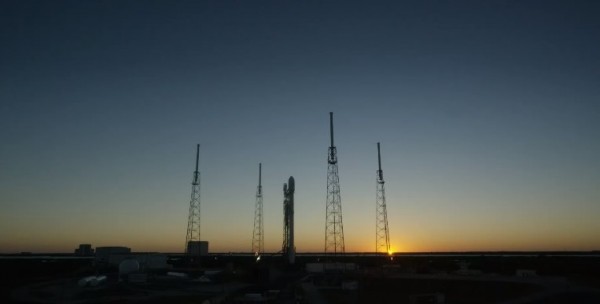By Ana Verayo, | February 26, 2016

SpaceX's latest attempt to launch its Falcon 9 rocket has been scrubbed thrice in a row.
Another SpaceX Falcon 9 rocket launch was cancelled Thursday evening due to technical problems involving loading the booster with liquid oxygen that has been supercooled. The rocket's main mission is to launch a communications satellite into lower Earth orbit.
Like Us on Facebook
This is SpaceX's second attempt to land a rocket vertically on a floating droneship. This attempt was also a day late due to propellant temperature issues and as the countdown continued just before liftoff at 6:47 P.M. EST, an engineer signalled to stop the launch at the T-minus 41 second mark.
The launch window has also been already extended to 8:23 P.M. as SpaceX mission scientists aborted the mission after some confusion until they ultimately cancelled for the day. SpaceX did not provide much detail about the cancellation but tweeted that teams are now reviewing data until the next available launch date.
After upgrading the Falcon 9 rocket, this has been the second flight scheduled after numerous improvements were applied to increase launch performance. Last December, a successful launch also resulted in a successful landing at the Cape Caneveral Air Force Staion 1 in Florida.
This upgraded booster rocket is also measured to be five feet taller than the last version at 229 feet, featuring an extended interstage section that will help separate the first and second stages, that can improve the separation system. Apart from this, the second stage propellant tanks are also extended where its single Merlin 1D engine features a longer nozzle that can produce 210,000 pounds of thrust.
This engine along with another nine are all located in the rocket's first stage, burning refined kerosene fuel (RP-1) and liquid oxygen. The liquid oxygen is required to sustain a temperature of minus 298 degrees Fahrenheit however for this launch attempt, the fuel was cooled to negative 340 degrees. The RP-1 is normally stored at a room temperature of 70 degrees however, for this launch it was chilled to 20 degrees.
According to CEO and founder, Elon Musk, this is just one of the things that we're doing for the first time, and this could also be the first time anyone has ever done this, using a deeply cryogenic propellant. Since our fuel is sub-cooled, especially the liquid oxygen, it is now close to freezing point that can increase its density significantly.
Musk explains how the thrust can become higher as the stage separation is now improved, and stretching the length of the upper stage of the rocket means more propellant being added. Electronics also went numerous improvements, making this a significantly improved rocket from the previous one.
The first launch attempt on Wednesday was called off even before fueling even started since the liquid oxygen propellant was not cold enough. However, last evening's postponed launch almost underwent complete fueling.
According to SpaceX product manager John Insprucker, liquid oxygen loading for the first stage was just getting finished when it was cancelled. Right now, we are still evaluating liquid oxygen propellant load, weighing if there's enough time left during countdown to finish loading liquid oxygen but unfortunately, the launch team decided to stop the countdown.
-
Use of Coronavirus Pandemic Drones Raises Privacy Concerns: Drones Spread Fear, Local Officials Say

-
Coronavirus Hampers The Delivery Of Lockheed Martin F-35 Stealth Fighters For 2020

-
Instagram Speeds Up Plans to Add Account Memorialization Feature Due to COVID-19 Deaths

-
NASA: Perseverance Plans to Bring 'Mars Rock' to Earth in 2031

-
600 Dead And 3,000 In The Hospital as Iranians Believed Drinking High-Concentrations of Alcohol Can Cure The Coronavirus

-
600 Dead And 3,000 In The Hospital as Iranians Believed Drinking High-Concentrations of Alcohol Can Cure The Coronavirus

-
COVID-19: Doctors, Nurses Use Virtual Reality to Learn New Skills in Treating Coronavirus Patients







